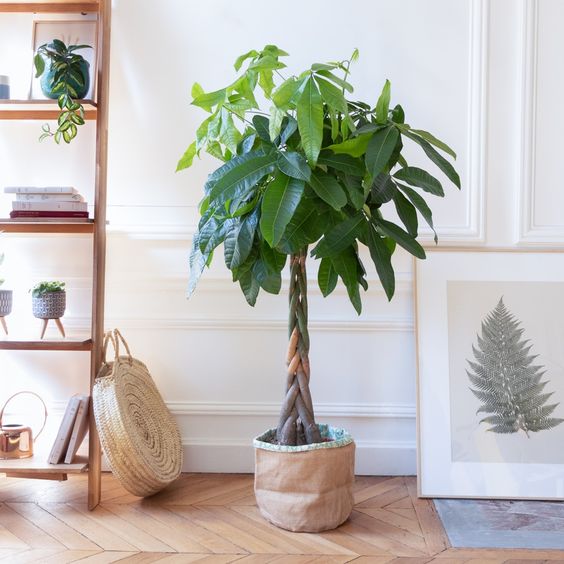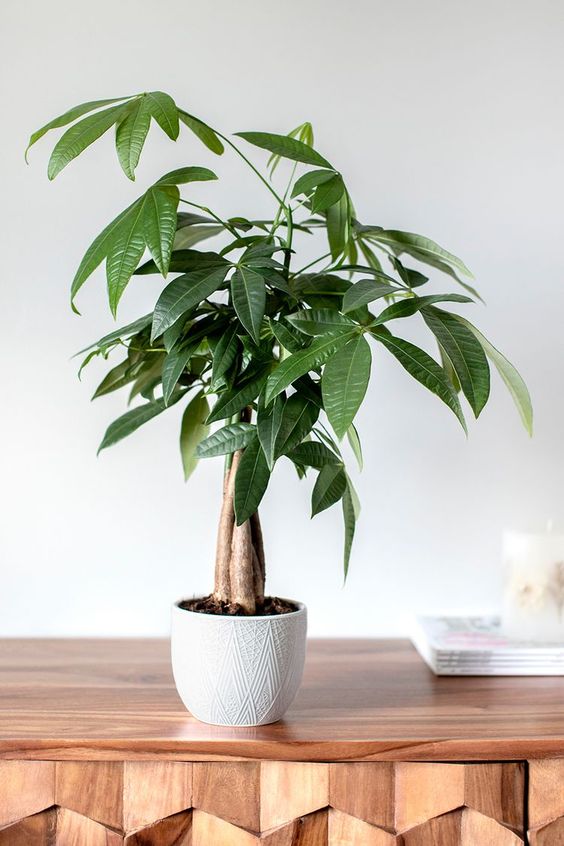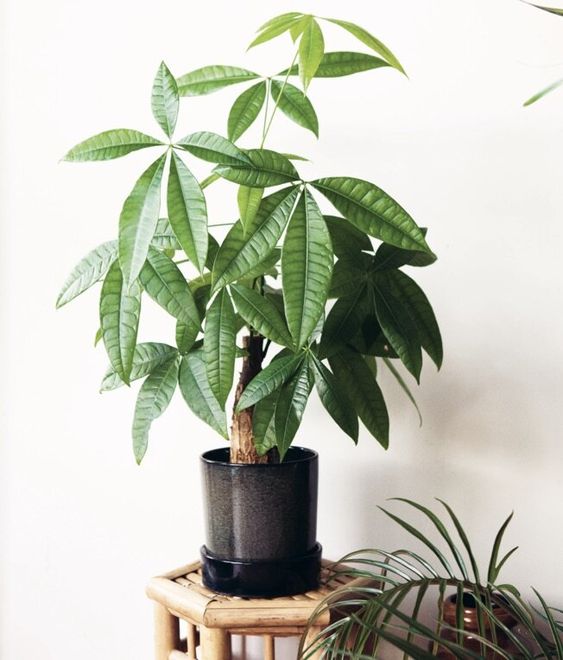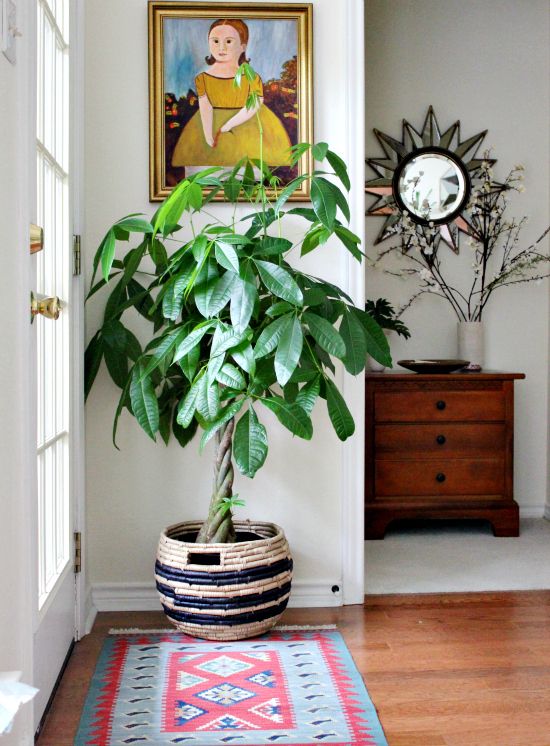|The Aglaonema is one of the plants that occupy the top positions in the list of the most favorite indoor […]
Pachira | The money tree

The Pachira plant, also known as the "Money Tree" is a popular indoor plant that has attractive umbellate leaves, a very characteristic twining stem, and interesting symbolism.
The Pachira plant is known by many names - water chestnut, Guinea nut, Guiana chestnut, Malabar chestnut, Mexican fortune, Dollar plant, provision tree, and saba nut. Part of the Malvaceae family, it is a tropical evergreen tree native to Central and South America, where it can reach 20m in height and produces edible nuts. The seeds in the fruit swell until the pod bursts open, and the roasted nuts taste like chestnuts and can be ground into a meal.
Symbolism
According to the Chinese art of Feng Shui, a properly placed money tree is considered to bring prosperity. The woven trunk of the tree, they say captures good fortune in its folds, and the number of leaves on a branch represents the five Feng Shui elements, which represent the elements of balance: earth, fire, water, wind, and metal. Finding a stem with seven leaves is incredibly rare and brings immense luck to the owner. Therefore, Pachira plants are often given as a wedding or housewarming gift.
The symbolism of the money tree makes it a favorite gift among business owners and executives. These plants are popular as a gift when a new business opens, an executive is promoted, or business expansion is undertaken. The Pachira is an expression of good wishes for luck and prosperity.
In terms of placement, many businesses keep a money tree near their cash register - for good luck. Within the home, the most common placement for promoting wealth is in the southeast corner.



Plant Care
Along with its status as a good luck magnet, caring for the Pachira is incredibly easy. These plants need only indirect light and infrequent watering, making them hassle-free plants for beginner flower growers.
Botanical name: Pachira Aquatica Common name: Money tree Plant type: Deciduous evergreen Average size: 3 m. Sun exposure: bright indirect light Soil type: moist well-drained soil Soil pH: 6-7.5 Toxicity: Not toxic to pets!
Light
The Money tree prefers bright indirect light but can adapt to lower as well. Too much direct sunlight will burn the leaves, but too little light will cause slow growth and yellow leaves. To get the balance right, rotate the plant regularly for a more even distribution of light.
Watering
Generally, the plant should be watered more often in the spring and summer months and less often in the fall and winter. While the Money Tree thrives with plenty of water, be careful not to overwater it, as this can be detrimental to it. The best way to avoid overwatering your plant is to make sure the pot and soil have adequate drainage.
Water the Money Tree every one to two weeks, allowing the soil to dry out between waterings. Of course, if the plant receives more light, you will need to increase the water intake so that the soil does not dry out too quickly. This is a plant that requires a lot of water, but not all the time. Always check soil moisture before watering. The soil volume should be 50-75% dry. Water thoroughly until you see water coming out of the drain hole and discard the excess water in the saucer.
Temperature
The plant feels best in a warm environment, so it's good to keep it in a place with temperatures between 18 and 25°C. The good thing is that these plants are still quite flexible and adaptable. They will be able to handle temperatures that go a few degrees below or above the perfect range.
Humidity
The Pachira plant likes extra moisture, so try to mist the plant regularly. Since the home environment is usually dry, you can increase the humidity around your tree by placing it on a pebble tray filled with water or using a small air humidifier.
Soil
It's important to maintain nutrient-rich houseplant soil with good drainage. To achieve this, you'll need to use a well-draining potting mix or add some sand and gravel for extra porosity. Feed once a month in the spring and summer when new leaves are born, with a basic fertilizer mix that has been diluted by half. Always make sure the soil is moist before applying any fertilizer.
More Tips
Take care of your money tree and it will take care of you!
Try not to move the Money Tree too often as they prefer a consistent environment. If you have to move it, you may see some leaves falling, but don't worry, it will recover!
Houseplants grow much more slowly than in the wild. Depending on the size of your plant and the density of the roots, it's a good idea to repot it every few years to provide fresh nutrients and encourage new growth.
Trim off discolored leaves with sharp scissors. When pruning your plant, take a step back and look at the entire shape of the canopy, and determine which branches to remove to give it to restore an even, balanced shape. Use sharp, clean shears and cut any excessive growth at the base of the stem.
The leaves of this plant are tender. Spray regularly to protect the plant from dust and gently clean each leaf with a damp cloth.
YOU HAVE MORE QUESTIONS?
Expand your plant knowledge by checking out our plant care blog to learn more about different houseplants and tips on how to keep your plants healthy and beautiful!
.
